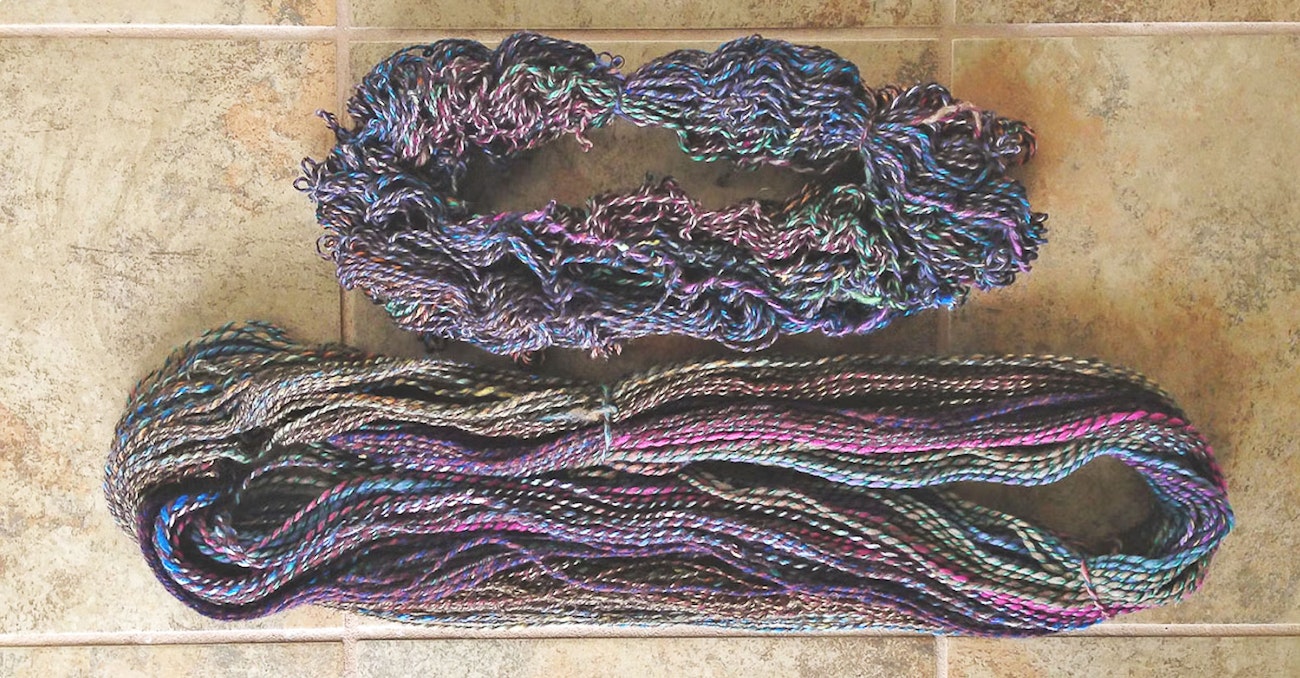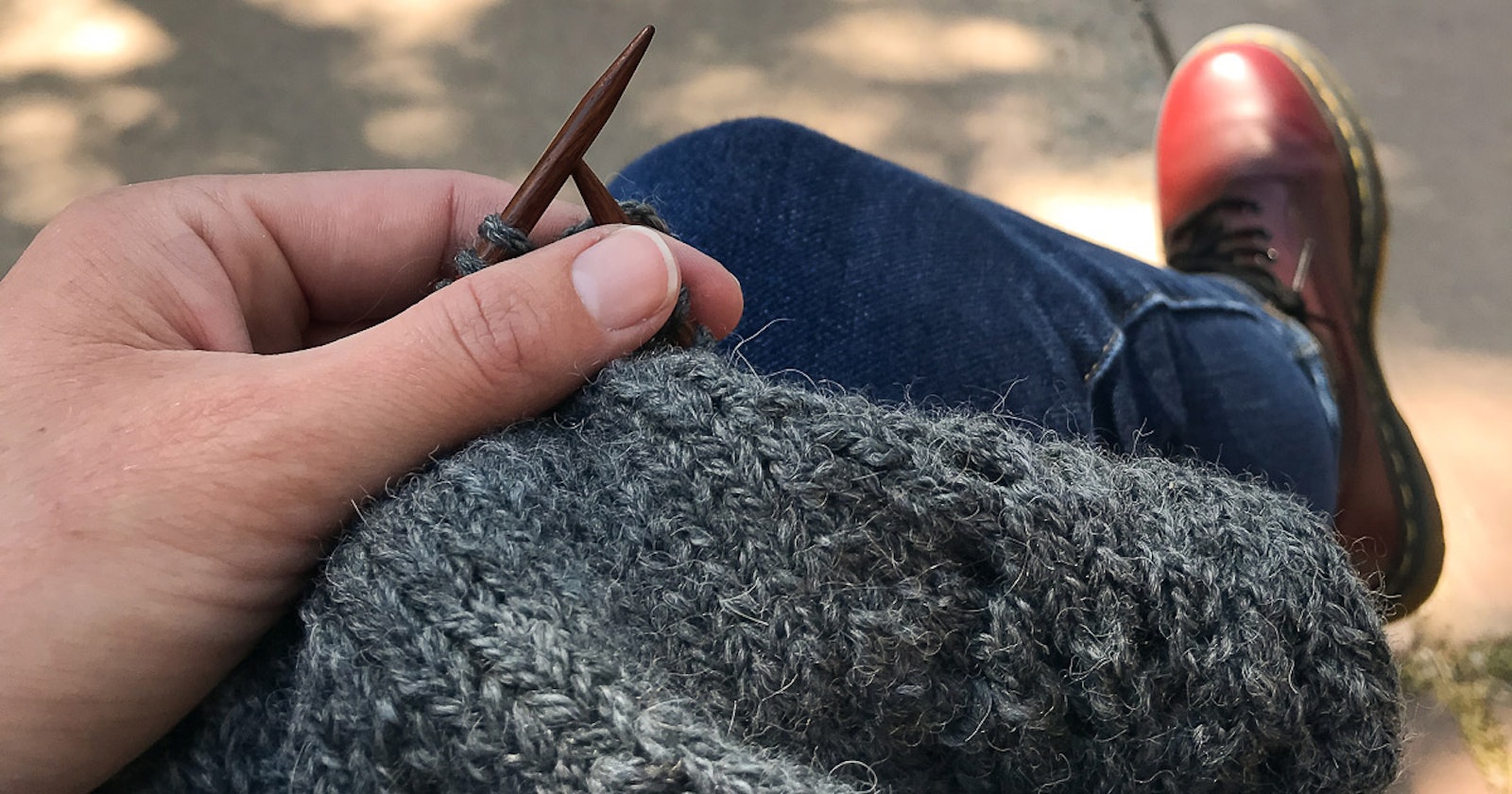There’s nothing quite like finally casting on a sweater using handspun yarn. Watching yard after yard filling bobbin after bobbin, we have plenty of time to think about the knitted fabric that will keep us (or our beloveds) cozy. Over the years, I’ve developed an approach that works for me, balancing the quest for consistency with the joy of no-pressure spinning. Here, I share my three top tips.
 Kate likes to store her singles on storage bobbins until she is ready to ply for an entire project.
Kate likes to store her singles on storage bobbins until she is ready to ply for an entire project.
1. Spin it all!
In this article on the benefits of adding a bobbin winder to your spinning practice, I talked about the sadness of a wonky hem and the fix that helped. This is worthy of repeating, in my opinion: spin all your singles before plying a large project. (This, of course, does not apply when creating a singles yarn, and you cannot mix singles when chain-plying. However, I still find my consistency is improved if I spin all my singles before moving on to the next step in the project, no matter the yarn design.) When you are finally ready to ply, all the singles can be combined—the first singles and the last singles can be mixed. Rather than spinning identical bobbins (we are human after all), this system means that the goal is a homogenous lot of handspun yarn at the very end.
 Kate’s yarn before finishing (top) and after a hot soak in the sink (bottom).
Kate’s yarn before finishing (top) and after a hot soak in the sink (bottom).
2. Finish your yarn.
The urge to cast on the moment our yarn is released from the niddy-noddy is strong, but most types of handspun yarns are greatly improved with finishing. There are quite a few types of finishing, but the main idea is that we want the yarn to be in its final state when knitted. My Moonflower Dolman is a cabled yarn spun from Alpaca/Merino combed top that changed after washing. When I choose a knitting needle size and begin working according to the pattern gauge, I don’t want my knit sweater to grow or shrink after washing!
3. Ease it in.
There are many reasons why we might end up with one weird skein—an outlier to the group of yarn. You might have needed to buy a bit more fiber that was a different lot, there might have been one section of painted combed top that was more difficult to draft, or your spinning might have gotten just a bit too fine at the end. It happens. Depending on the sweater, there are different ways to deal with the odd skein if it must be used. Most of the time, I prefer to alternate skeins and work it into the fabric. As is often suggested for handpainted skeins, if you work with two balls of yarn, alternating every row or two rows will spread the differences out, making it less obvious. This is also why I like to spin more than I need for a large project: the odd skein out can become a hat or gift for a friend.
Find more tips in our sweater series on planning a project and spinning the yarn.
Kate Larson, editor of Spin Off, teaches handspinning around the country and spends as many hours as life allows in the barn with her beloved flock of Border Leicesters.
Originally published August 6, 2018; updated December 9, 2024.

